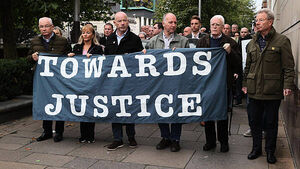Deputy Pentagon Press Secretary Sabrina Singh stated, “We have moved capabilities into the region that I think it is fair to say have gotten into Iran’s headspace and will influence their calculation on how and if they choose to respond.”
.
During a Pentagon press briefing, Singh stated, “We do not want that to happen, but we have two carrier strike groups there, each… with four destroyers.”
A second aircraft carrier was ordered by Defense Secretary Lloyd Austin to depart the Indo-Pacific and move to the waters within the US Central Command’s (CENTCOM) area of operation (AOR). Austin gave the Lincoln aircraft carrier a second order to speed up its transit, and the USS Abraham Lincoln Carrier Strike Group arrived on Wednesday night.
According to Singh, Austin ordered the removal of the Lincoln aircraft carrier’s few stops in the Indo-Pacific.
Singh claimed that in addition to sending a “very powerful” message of deterrence, the increased US force posture also promised to support Israel in the event of an attack.
Hezbollah and Iran attacks on Israel are still anticipated.
After Iran and Hezbollah threatened to exact revenge on Israel for two assassinations in Beirut and Tehran, the US military moved quickly to bolster its presence in the region in recent weeks.
However, the expected reaction has not yet materialized, as Iran and the militant group in Lebanon claim that part of their psychological warfare strategy is to keep the “enemy” waiting.
Thousands of additional US soldiers, ballistic missile defense systems, the USS Wasp, a nuclear-powered submarine with numerous cruise missiles, and more are among the additional military resources being sent to the area.
Following the assassinations of top Hezbollah military commander Fuad Shukr and prominent Hamas political figure Ismail Haniyeh on July 30, US officials had braced themselves for an Iranian reaction. The timing of any response was then postponed as the intelligence was updated multiple times.
As of Thursday night, US officials who were aware of the most recent intelligence assessments stated that Washington continued to anticipate Hezbollah and Iran taking revenge. It is still unclear if they will work together to execute a coordinated response or if they will each carry out a separate operation. One US official told Al Arabiya English, “The Iranians are still able to launch an attack within 12-24 hours of making that decision, which they have yet to make.”
It is also anticipated that Hezbollah will launch an offensive against Israel’s center in what would be seen as a blatant retaliation for Shukr’s murder. The Iran-backed group decided against a plan to launch a barrage of missiles at Tel Aviv, according to the Washington Post, which cited US officials.
Speaking to Al Arabiya English under the condition of anonymity so that they could express themselves freely, the US official stated that it was still unclear exactly what the Iranians and Hezbollah would do. The official stated that it is anticipated that US military assets in the area will stay in situ for the foreseeable future.
Plans to redeploy elsewhere are dependent on a ceasefire in Gaza, according to a second US official. The second official warned that “things could quickly go south, and we would have the ability to send an aircraft carrier into the [Arabian] Gulf” if the Iranians attacked Israel and crossed certain red lines.
However, US officials have stated time and time again that a ceasefire between Israel and Hamas is the only way to defuse the situation and stop tensions from rising further.





